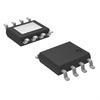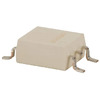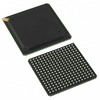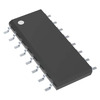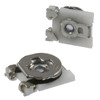An In-Depth Analysis of Resistance Welding Technology
In the rapidly changing electronics industry, circuit board manufacturing and repair are at the core of technological innovation and fine craftsmanship. Experts and enthusiasts constantly interact with various circuit boards involving numerous complex connection technologies, among which resistance soldering technology occupies a central position. This is not only a basic skill for connecting electronic components and circuit boards, but also a scientific achievement that continues to evolve with technological progress and innovation. On this basis, this article explores in depth the application of resistance welding and other electrical connection technologies such as crimping and wire wrapping, as well as the development and evolution of these technologies in modern electronics manufacturing.
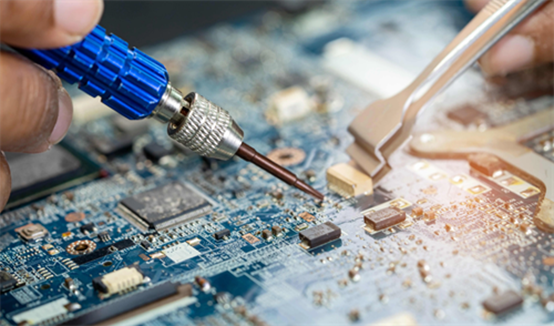
At the core of this realm lies resistance welding technology, a process transcending mere simplicity in connecting electronic components and circuit boards to stand as a beacon of scientific and technological advancement, perpetually advancing in step with the march of innovation.
Beyond the realms of resistance welding lie the crafts of crimping and wire winding, each playing a pivotal role in their respective application theaters. Crimping technology, a method deploying physical force to marry a wire or component to a circuit board, finds its niche in scenarios eschewing the use of heat, such as in temperature-sensitive environments. Wire-winding technology, on the other hand, weaves an electrical connection by entwining a wire around a designated contact point, commonly employed in connecting high-power components or executing repair operations.
While each technique boasts its unique set of virtues and appropriate scenarios, in the areas of circuit board fabrication and repair, soldering technology reigns supreme, heralded for its dependability and efficiency. Modern electronic manufacturing, in its quest to enhance welding technology, continually embraces automation and precision control technologies. Envisage the deployment of robotic welders and temperature-controlled welding stations, all converging to elevate connection quality and manufacturing efficiency. Concurrently, as the narrative of lead-free solder and other environmentally benign materials unfolds, welding technology strides toward a more eco-conscious and healthful horizon.
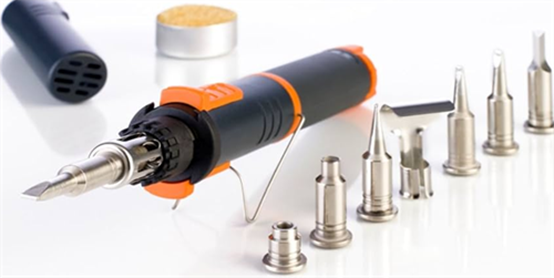
Figure 1: The Development of Gas-Powered Heaters Lead to “Self-Heating” Soldering Irons
Indeed, mastering the finesse of precise welding techniques is an odyssey demanding relentless practice and patience. An exemplary solder joint is the harmonious fusion of stable electrical performance and mechanical strength, vigilantly avoiding the pitfall of cold solder joints—deceptive connections that, while seemingly intact, are fraught with poor contact, potentially culminating in circuit disruptions or instability.
In the tapestry of soldering technology, the pencil soldering iron emerges as a fundamental instrument. Convenient and accessible, it beckons beginners to embark on their initial forays into the realms of electronic production and repair. Yet, these pencil irons often lack the finesse of temperature control, a deficiency that might compromise work on sensitive components or intricate tasks. Thus, as one's journey in technology advances and the clarion call for precision intensifies, the transition to welding devices equipped with temperature control functions becomes the hallmark of professionals and advanced enthusiasts.
Temperature-controlled soldering stations enable the meticulous calibration of the soldering iron's tip temperature, an imperative for soldering components with diverse thermal masses. For sensitive or elaborate electronic components, temperatures straying too high or too low can wreak havoc, leading to damage or ineffective soldering. Precise temperature control ensures that the soldering iron operates at the ideal temperature, fostering more stable and reliable solder joints whilst mitigating thermal stress on components.
Advanced welding equipment may further boast digital temperature displays, hot air guns, and adjustable temperature soldering iron tips, among other accouterments in the welding station, all designed to enhance the user's adaptability across various welding scenarios. A digital temperature display provides real-time, accurate monitoring and adjustment of temperatures, a heat gun serves in the soldering or disassembly of multi-pin components, and an array of soldering iron tips accommodate diverse solder joints and components, each feature converging to elevate the art of welding into a more precise and versatile craft.
With the advent of electric power technology, the once ubiquitous pencil-style soldering irons with integrated heating elements have signaled a gradual shift away from their traditional, externally heated counterparts. This evolution epitomizes the dynamic nature of technological advancement, particularly in the modern production environment. Here, while wave soldering or reflow soldering technologies predominantly undertake circuit board production, the art of manual soldering persists; its relevance is undiminished in rework scenarios, specialized component fabrication, and the precise connection of wires and connectors.
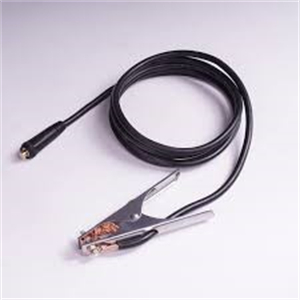
Figure 2: Vendors Offer These Tweezers in Multiple Sizes to Handle Different Soldering Situations and Spaces
Previously, pencil-style soldering irons were marred by inherent limitations, primarily their lack of precision and safety concerns. This prompted the innovative leap to resistance soldering technology. At the heart of resistance soldering lies the principle of utilizing the heat generated by the current traversing the welding tip, efficiently melting the solder to forge connections. Its hallmark is the delivery of precise, uniform heating, culminating in robust and consistent solder joints. The technology's rapid heating capability, focusing intense heat directly at the solder joints, minimizes thermal stress and potential damage to the surrounding circuitry and components.
As the relentless march of technology continues, so does the evolution of resistance soldering. Innovations, such as sophisticated temperature control systems, are now standard in modern resistance welding apparatus. These systems adeptly modify the temperature to suit varying material properties and specific welding requirements, thereby enhancing the welding outcome and operational efficiency. Furthermore, contemporary welding tools may incorporate features like heat feedback control and automatic temperature compensation, augmenting the precision and reliability of the welding process.
In addressing safety, contemporary resistance welding equipment typically includes protective features, such as overheating protection and electrical insulation, safeguarding users against accidental injuries. Additionally, modern soldering technologies consider environmental impacts, adopting lead-free solders and other measures to mitigate health risks and environmental harm.
The electronics industry has embraced resistance welding systems for their versatility, performance, and convenience, qualities that continue to evolve and improve. Noteworthy are the tweezer-style resistance welding tools, like the American Beauty Tools model 105133, which provide unparalleled precision in welding, particularly beneficial in constrained spaces or when dealing with minute components. These tools feature tweezer tips in various sizes and shapes, empowering users to choose the optimal tool for their specific welding tasks and environments.
Taking model 105133 as a case in point, its attributes include a 6-inch long design coupled with a nichrome tapered needle electrode, a mere 0.04 inches in diameter. This slender and precise electrode facilitates intricate soldering tasks on densely populated or complex circuit boards, ensuring even the most elusive solder joints are within reach. The durability and thermal conductivity of the nickel-chromium alloy material further enhance the electrode's performance in resistance welding.
Moreover, these advanced tools are often equipped with temperature regulation and control systems, empowering users to finely tune the heat according to different materials and specific welding scenarios. Such meticulous temperature control is instrumental in preserving welding integrity, preventing damage due to overheating, and bolstering welding efficiency.
In summation, resistance welding and its ancillary technologies serve as foundational pillars within the electronics industry, delivering precise, dependable connections while continually driving industry innovation. As technology forges ahead, evolving from simple pencil irons to sophisticated, feature-rich tweezer-style resistance soldering equipment, the precision and efficiency in electronics manufacturing and repair have seen remarkable enhancement. Looking forward, the ongoing development of eco-friendly materials and intelligent control technology promises further breakthroughs in safety, environmental stewardship, and efficiency, aligning with the electronics industry's relentless quest for refined connectivity solutions.
About us
ALLELCO LIMITED
Read more
Quick inquiry
Please send an inquiry, we will respond immediately.
→ Previous

The innovative fusion of brushless DC (BLDC) motors and Hall sensors marks a significant stride in the evolution of modern motor technology. This article delves deeply into Hall sensors' pivotal role in BLDC motors. It focuses especially on enhancing motor performance and reliability through precisi...
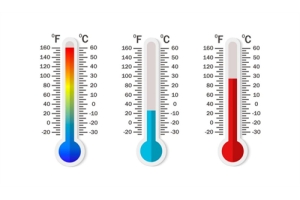
In the intricate realm of electronic component design and application, the measurement of temperature stands as not just a fundamental requirement, but a pivotal element in the assurance of component performance's accuracy and reliability. This article delves deeply into the two primary temperature ...
→ Next

Mastering the BLDC Hall Sensor: The Key to Precise Position Encoding
on January 10th

Simple Formula to Convert Celsius to Fahrenheit
on January 6th
Popular Posts
-

What is GND in the circuit?
on January 1th 2946
-

RJ-45 Connector Guide: RJ-45 Connector Color Codes, Wiring Schemes, R-J45 Applications, RJ-45 Datasheets
on January 1th 2502
-

Fiber Connector Types: SC Vs LC And LC Vs MTP
on January 1th 2091
-

Understanding Power Supply Voltages in Electronics VCC, VDD, VEE, VSS, and GND
on November 9th 1898
-

Comparison Between DB9 and RS232
on January 1th 1765
-

What Is An LR44 Battery?
Electricity, that ubiquitous force, quietly permeates every aspect of our daily lives, from trivial gadgets to life-threatening medical equipment, it plays a silent role. However, truly grasping this energy, especially how to store and efficiently output it, is no easy task. It is against this background that this article will focus on a type of coin cell battery that may seem insignificant on the...on January 1th 1714
-

Understanding the Fundamentals:Inductance Resistance, andCapacitance
In the intricate dance of electrical engineering, a trio of fundamental elements takes center stage: inductance, resistance, and capacitance. Each bears unique traits that dictate the dynamic rhythms of electronic circuits. Here, we embark on a journey to decipher the complexities of these components, to uncover their distinct roles and practical uses within the vast electrical orchestra. Inductan...on January 1th 1662
-

CR2430 Battery Comprehensive Guide: Specifications, Applications and Comparison to CR2032 Batteries
What is CR2430 battery ?Benefits of CR2430 BatteriesNormCR2430 Battery ApplicationsCR2430 EquivalentCR2430 VS CR2032Battery CR2430 SizeWhat to look for when buying the CR2430 and equivalentsData Sheet PDFFrequently Asked Questions Batteries are the heart of small electronic devices. Among the many types available, coin cells play a crucial role, commonly found in calculators, remote controls, and ...on January 1th 1567
-

What Is RF and Why Do We Use It?
Radio Frequency (RF) technology is a key part of modern wireless communication, enabling data transmission over long distances without physical connections. This article delves into the basics of RF, explaining how electromagnetic radiation (EMR) makes RF communication possible. We will explore the principles of EMR, the creation and control of RF signals, and their wide-ranging uses. The article ...on January 1th 1550
-

CR2450 vs CR2032: Can The Battery Be Used Instead?
Lithium manganese batteries do have some similarities with other lithium batteries. High energy density and long service life are the characteristics they have in common. This kind of battery has won the trust and favor of many consumers because of its unique safety. Expensive tech gadgets? Small appliances in our homes? Look around and you'll see them everywhere. Among these many lithium-manganes...on January 1th 1519





